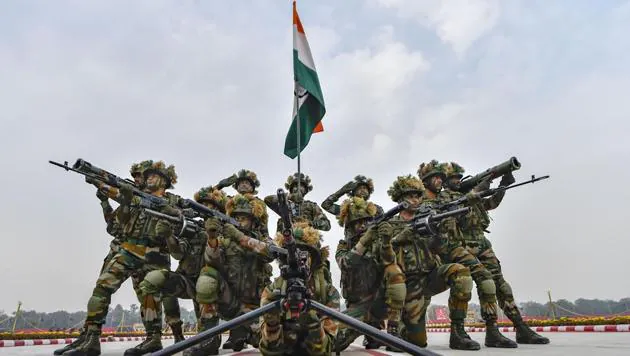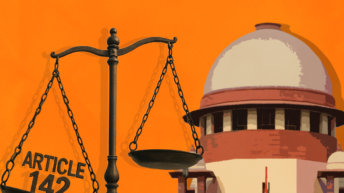
On 15 January 1949, Lt Gen (Later Field Marshal) Kodandera Madappa Cariappa was appointed as the Commander in Chief of the Indian Army. He was the first Indian Army Officer to be so appointed. Subsequently, 15 January was chosen to be celebrated as Army Day, as it marked an epochal moment in the history of the Indian Army.
When India achieved independence and was split on religious grounds into two countries, the erstwhile British Indian Army was also split into the Indian Army and the Pakistan Army. What was strange about this arrangement was that both the armies had British officers as their Commanders in Chief! The command of the Pakistan Army devolved on General Sir Frank Walter Messervy, who served as the First Commander-in-Chief of the Pakistan Army from 15 August 1947 to 10 February 1948. He was succeeded by another British officer, General Sir Douglas David Gracey, who served till 16 January 1951 and was the last British Commander in Chief of the Pakistan Army.
In India, the story was not too different. The command of the Indian Army devolved on General Sir Robert McGregor Macdonald Lockhart, who served as the Commander in Chief from 15 August 1947 till 31 December 1947. He was succeeded by General Sir Francis Robert Roy Bucher, who served as the Commander in Chief of the Indian Army till 14 January 1950. The next day, with the appointment of Lt Gen Cariappa as the Commander in Chief, India finally had an Army Chief from amongst its own people.
The first India-Pakistan war which began in October 1947 and continued till 1948 was thus fought by two armies, both of which had British officers as their Commanders-in-Chief! This surely must count as a first in the annals of military history. Another first was a conversation that took place between General Lockhart and Prime Minister Nehru, soon after India achieved independence. When Lockhart went to Nehru asking for a strategic directive on the defence policy, Nehru took one look at his paper and blew his top. ‘Rubbish! Total rubbish!’ he shouted. “We don’t need a defence plan. Our policy is ahimsa (non-violence). We foresee no military threats. Scrap the army! The police are good enough to meet our security needs.” The First India-Pakistan War which started later in October 1947 paid put to any such thought, which in hindsight appears fortuitous.
The Indian Army has since then, acquitted itself creditably in defending the nation, be it from external aggression or internal disorder. Saving the state of Jammu and Kashmir from the Pakistani marauders was done under extremely adverse circumstances. The declaration of a UN-sponsored ceasefire stopped the first war which the Indian Army was engaged in, but there are many who believe that had the war continued, India could have wrested back the entire state of J&K from Pakistan. That of course is a matter for a separate debate. In September 1948, the Indian Army, in a swift operation codenamed Operation Polo, forced the surrender of the Nizam’s forces commanded by a Hashemite Arab officer, Major General El Edroos, with El Adroos surrendering to Major General (Later General) JN Chaudhuri of the Indian Army. The Indian Army was also used to liberate Goa, Daman and Diu in 1961, thus eliminating the last vestiges of foreign rule from Indian shores.
The India-China war of 1962 marked a low in the Army’s history, but the causative factors that led to the debacle were political. Within three years, India’s Armed Forces successfully thwarted Pakistani aggression for the second time, rendering void Pakistan’s dream of annexing Kashmir. This was followed in 1971 by the Liberation of Bangladesh, which resulted in the break-up of Pakistan and the emergence of India as a power of consequence in world affairs. But Pakistan continued with its perfidy and yet again attempted to change the status quo by infiltrating troops across the Kargil heights. There too, they were outplayed, and were forced to beat a humiliating retreat.
Against China, the Indian Army retrieved its respect in the clashes which occurred in Nathu La and Cho La from 1-14 September 1967, when Indian troops drove back Chinese forces. Chinese aggression was again repulsed in Sumdorung Chu in the Tawang Sector, in the stand-off which took place between Indian and Chinese troops in 1986-87. The Chinese were resisted in Doklam in 2017, in Galwan in Eastern Ladakh in June 2020, and more recently, in Yangtse in Eastern Ladakh in December 2022. While tension still prevails across the LAC with China, the Indian Army remains suitably poised to give a befitting response to any Chinese aggression.
On the internal front, the Army has contributed in a major way in bringing peace and tranquility to violence-affected regions in Northeast India, in quelling the decade-long Punjab insurgency from the mid-1980s to mid-1990s and in bringing peace and stability to Jammu and Kashmir. Today, the Army is moving forward in its modernisation thrust, which will change the face of the Army by 2030. As per Army Chief, General Manoj Pande, the current equipment profile of the Army has 45% ‘vintage’ equipment, 41% ‘current’ equipment & 14% ‘state-of-the-art’ equipment. This by itself is a huge improvement over what existed in 2014. But even this is set to further improve to close to 35% ‘current’ & 44% ‘state-of-the-art’ equipment by 2030, making the Army a credible instrument of deterrence. 2023, stated the Army Chief, will be a year of transformation.
In terms of manpower, the Agnipath scheme has been started which will give the Army a younger age profile as well as the option to retain only the best among the recruits. A well motivated, well equipped and well led Army is the need of the times and the Indian Army is well set to defend the country against all threats. Today, the Indian Army is transforming into a future-ready, technology-driven, lethal and agile force. On this occasion, we pay our tributes to those who defend the motherland and also pay remembrance to all those who have sacrificed their lives for the defence of India as also to the veteran community for their sacrifices over the years.





Add comment